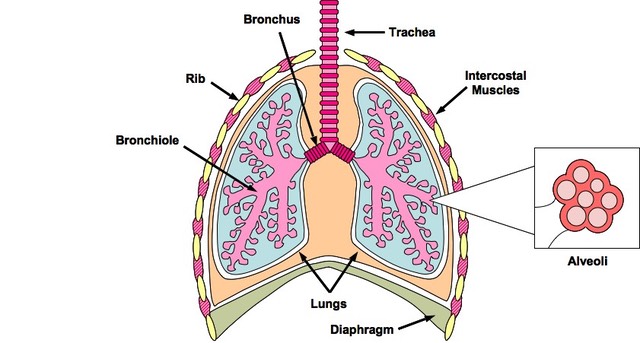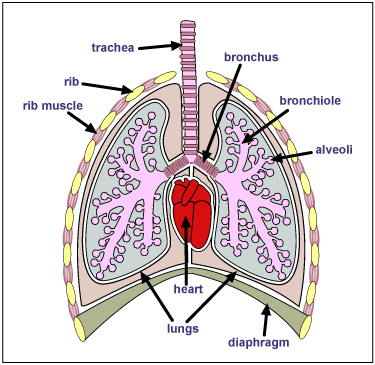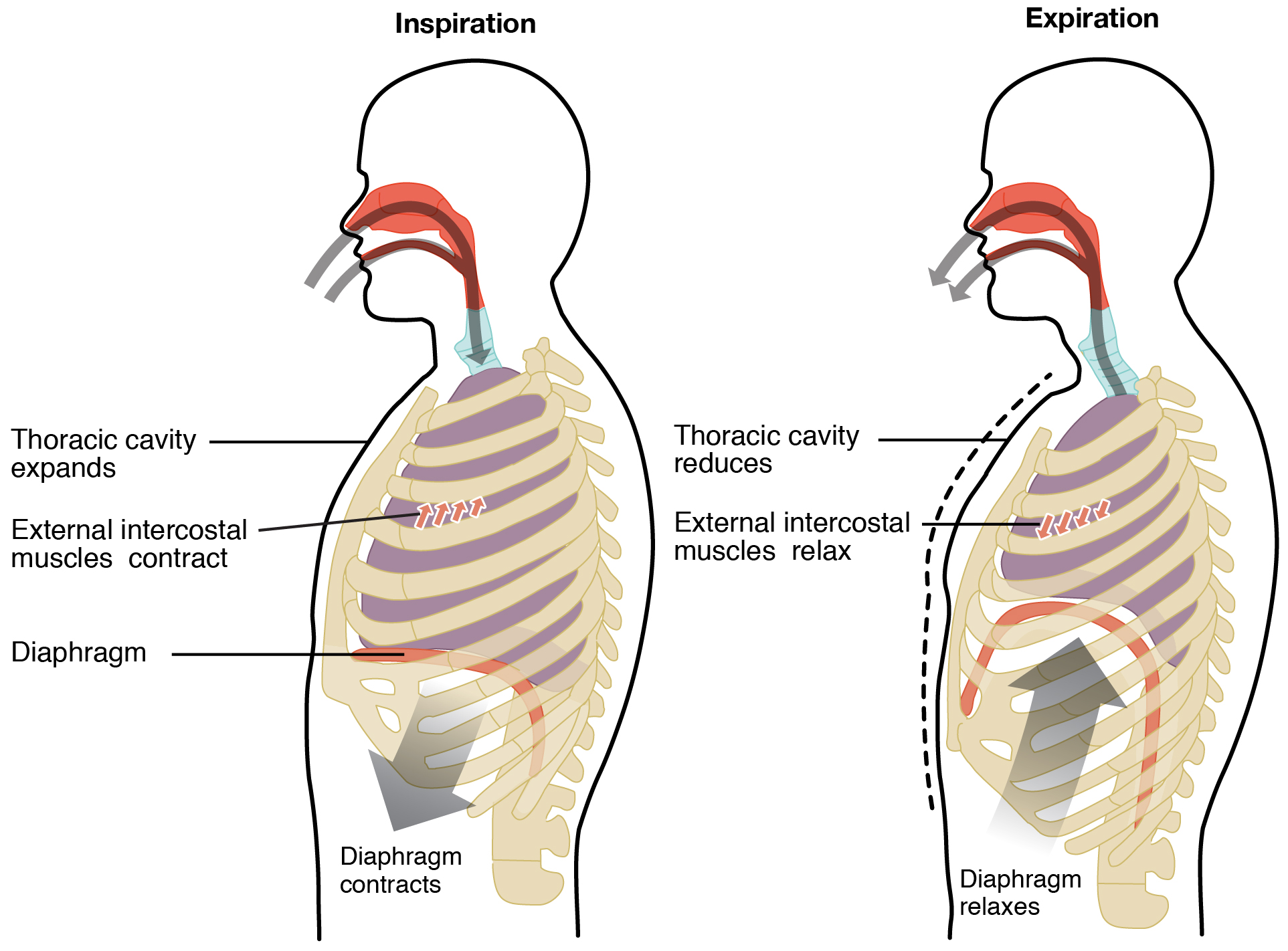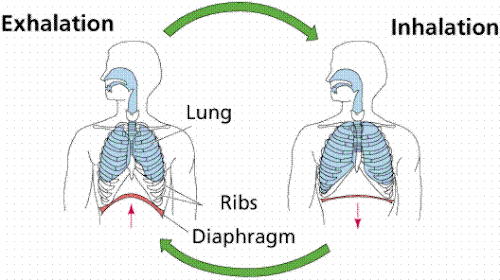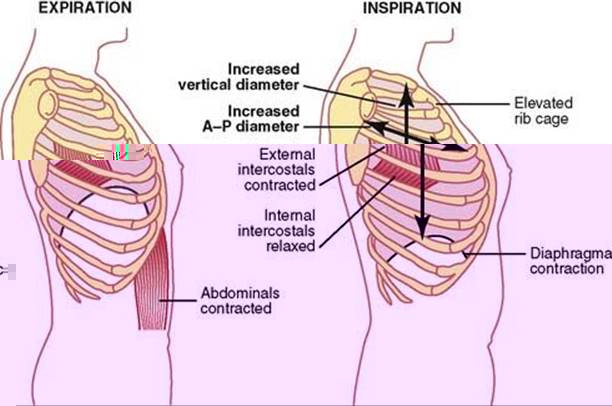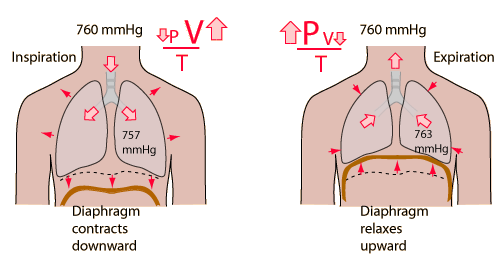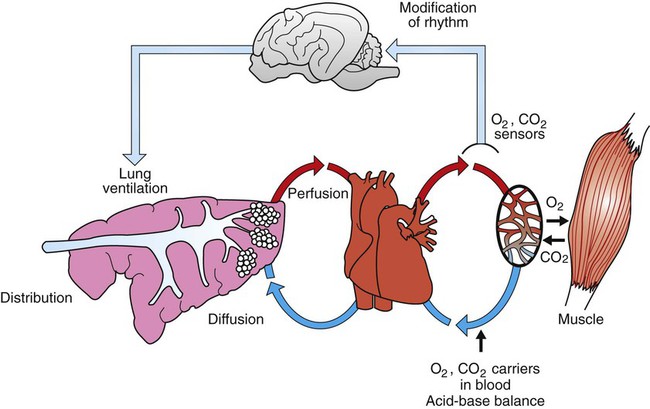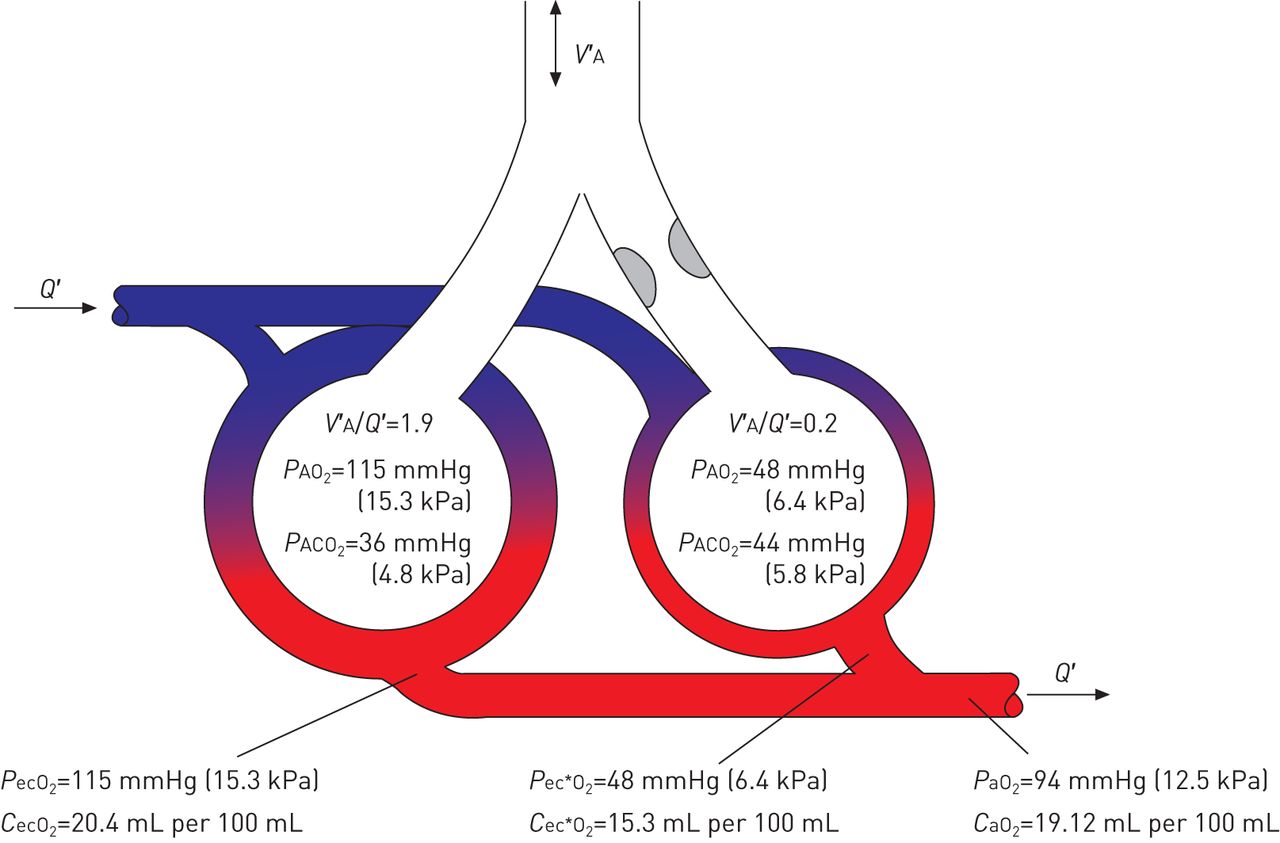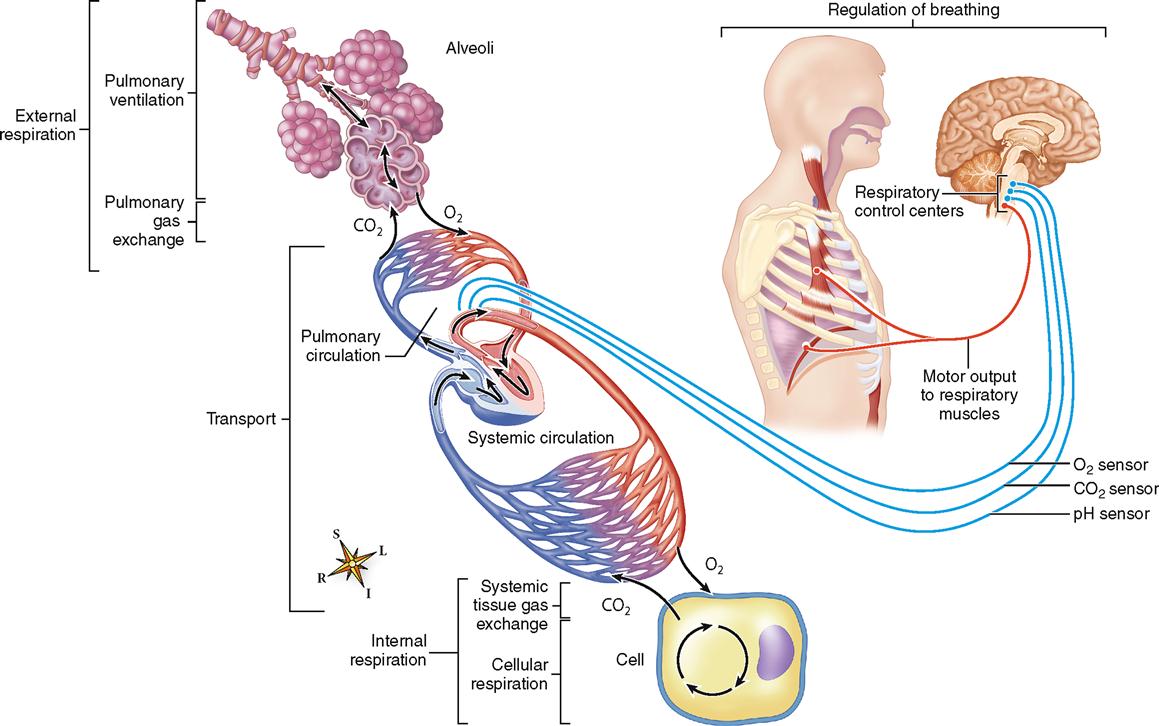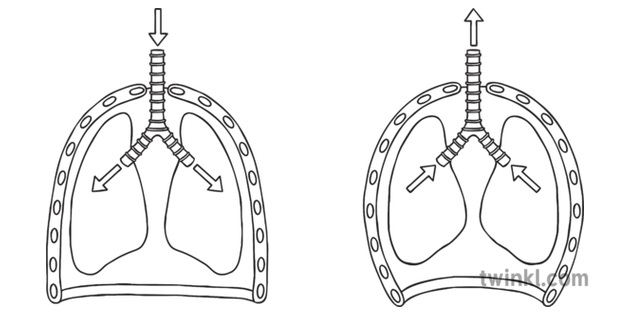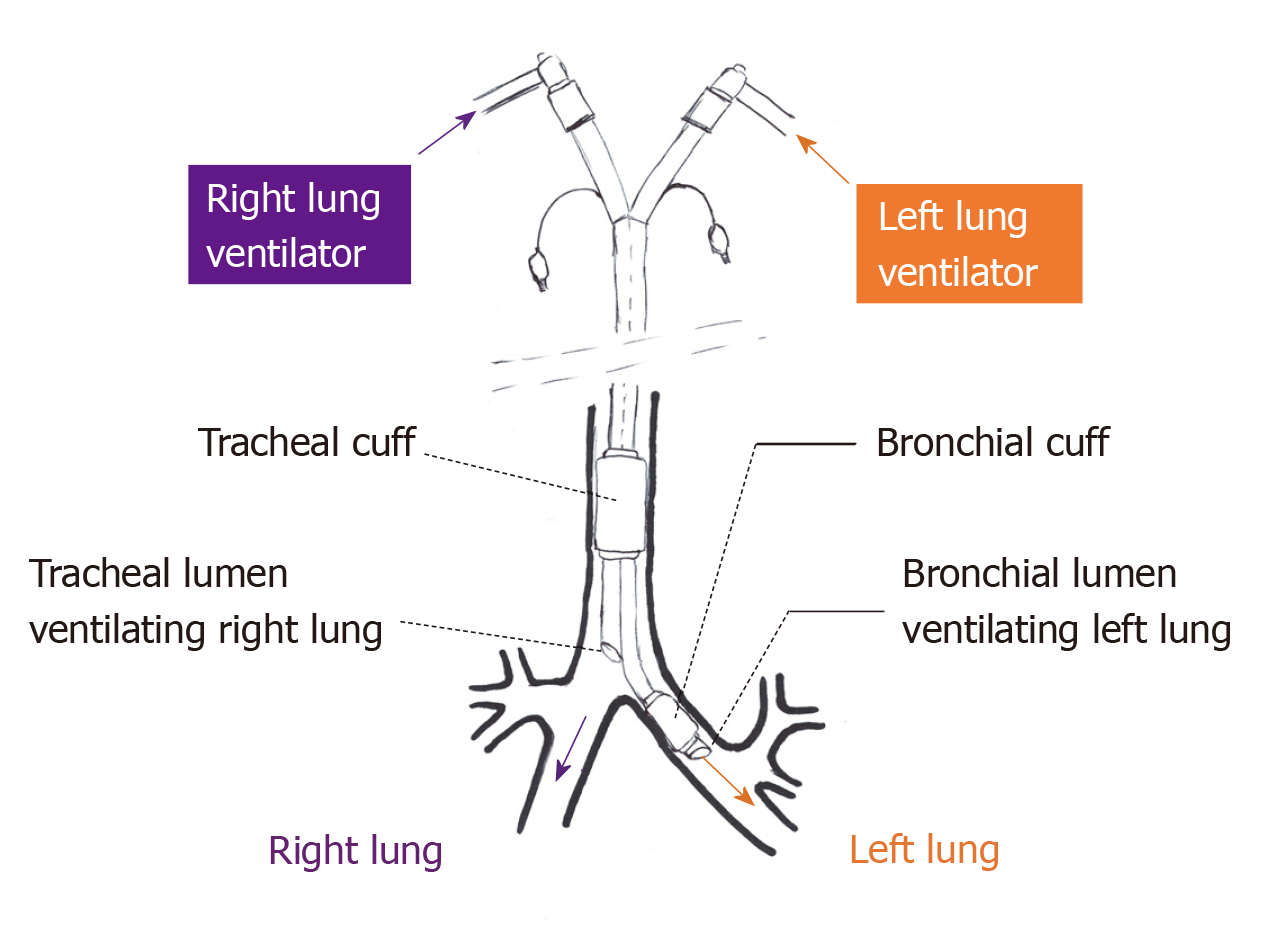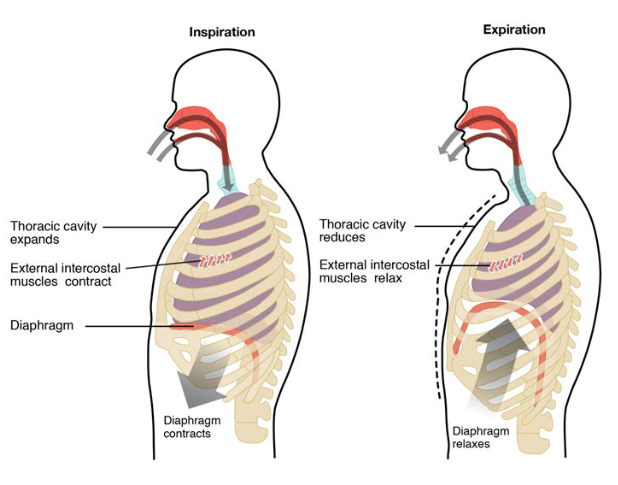Ventilation Diagram Lung

Labeled diagram of the human lungs.
Ventilation diagram lung. Increases and air is forced from the lungs. The air moves through the passages because of pressure gradients that are produced by contraction of the diaphragm and thoracic muscles. This thinness facilitates faster oxygenation. Ventilation or breathing is the movement of air through the conducting passages between the atmosphere and the lungs.
Increases and air rushes into the lungs. System is defined as an open system. In restrictive disease the fvc is reduced due to restricted inflation of the lungs and chest eg from weak inspiratory muscles or an anatomical deformity. Decreases and air is forced from the lungs.
The faster the xenon clears from the lung the better ventilation is in the lungs. The blood air barrier in the alveoli is 50 times thinner than a sheet of trace paper. Ventilator associated lung injury ventilator associated lung injury vali refers to acute lung injury that occurs during mechanical ventilation. The ventilator pumps in air through a tube inserted into the mouth.
A type of cancer that started in some other part of the body and then the cancerous cells travel and spread to the lungs metastasis 62. Lung metastasis secondary lung cancer. This causes the inspiratory reserve volume to be reduced as the lungs cant inflate as much during maximum inspiration. Ventilator associated lung injury vali sometimes termed ventilator induced lung injury is alveolar injury related to mechanical ventilation.
Possible mechanisms include alveolar overdistention ie volutrauma and the shear forces created by repetitive opening and collapse of alveoli ie atelectrauma leading to release of inflammatory mediators resulting in increased alveolar permeability fluid accumulation and loss of surfactant. Decreases and air rushes into the lungs. Anatomy of the lungs air enters the respiratory system through the mouth and the nasal cavity passing through the pharynx then larynx where sounds are produced for speech and finally the trachea which enters the chest cavity. Lungs form the central organs of the respiratory system and facilitate the exchange of gases along with the associated airways and blood vessels.
Laryngeal thyroid breast and kidney cancers as well as soft tissue carcinoma are a few types of cancers more likely to affect the lungs 63. Pulmonary ventilation commonly known as breathing is the process of moving air into and out of the lungs.
